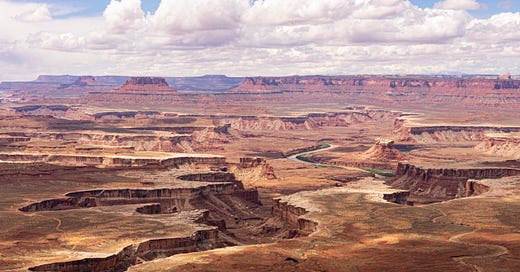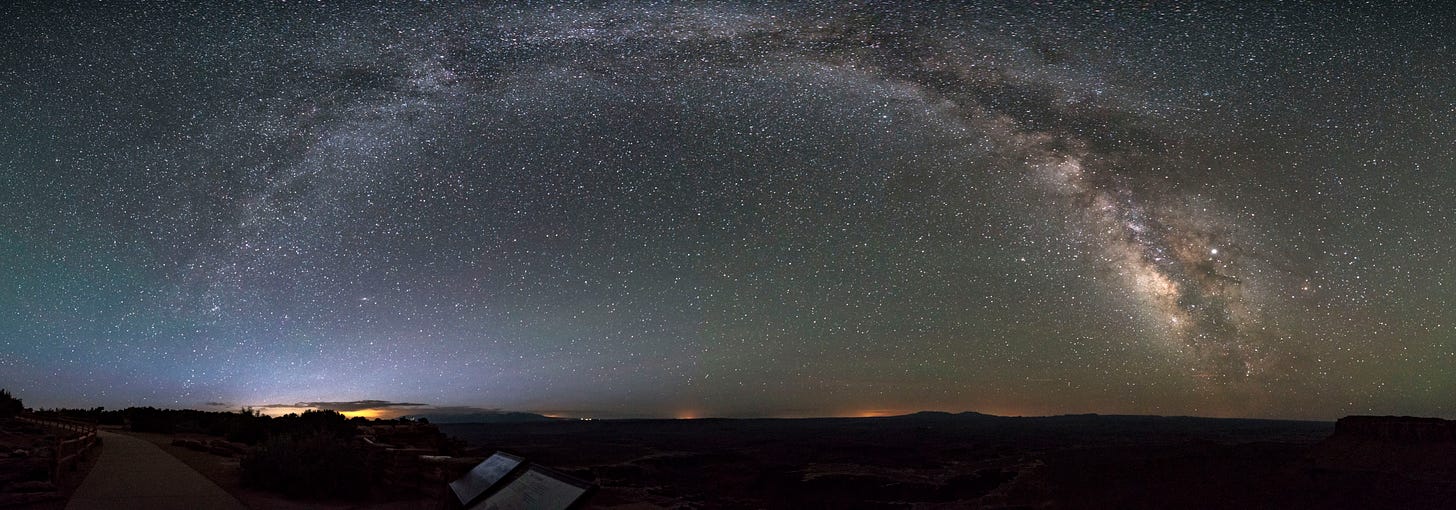The western world’s version of the human species has largely subdued the night darkness with artificial light. What was once a time of darkness and prowling beasts is now fundamentally changed by street lights and other illumination that obscures the night sky to the point that only a small percentage of the stars in the sky can be seen from our towns and cities.
There is so much artificial light in our populated areas, that most of us have little appreciation for the overwhelming number of stars in our skies. If we step out into a backyard, the sky we see is so overwhelmed and washed out by the crazy amount of artificial we use to illuminate the night, that all we are likely to see are a few dozen stars and, if it is illuminated, the moon.
What you will find in this entry, through a comparison of images from one location, is a reminder of just how different night and day really are.
The two photos here are from the same spot but taken about twelve hours apart. We are as far as you can drive into the Park from the north entrance of Canyonlands National Park. We are looking down from the top of a mesa onto a desert plain eroded by the work of water flowing through its rivers. As you can see, it is a beautiful day with a good bit of cloud cover, that fortunately cleared by nighttime.
The view is otherworldly. You could imagine a movie filmed here involving a downed space ship or an epic Western.
For the first image we are with a crowd of people, mostly standing next to a short stone wall built to keep people from winning Darwin Awards for stupidity by falling off the edge of the mesa. At night, it is an entirely different story. There are only a few cars in the nearby parking lot and maybe a dozen people out of their cars taking in the view. Some of them, like me, are there to photograph the Milky Way in the dark skies of a new moon. Others a here to experience the night and see the star soaked sky that greated their great grandparents and other predecessors from the great illuminating of our streets and homes.
Most of the night photographers at clustered in small groups next to the wall near the edge of the mesa, many with instructors helping them capture their first image of the Milky Way. I am wandering about looking for a place to set up while my eyes adjust to the darkness. It takes about 15 minutes before you can see the stars clearly and fully in a dark sky. I settle about twenty yards behind the edge wall.
Here is the night sky seen from roughly the same vantage point of the first image. You are seeing just one arm of the Milky Way Galaxy. As you can see, there are more than a few dozen stars in the sky.
People are friendly and talkative in the dark. Several I met that night were experiencing the dark sky for the first time and were, like I am every time, overawed by the scale of it all. More stars than you can possibly count. Thousands of unimaginably large and distant galaxies stretched clear across the heaven in and around the magnificent Milky Way.
This just one arm of a huge spiral galaxy. Imagine the image stretched to fill the night sky. The lights on the horizon are light pollution from distant towns and cities.
For those interested in the process, the Milky Way images are each composites of several 20 to 30 second images that are stitched together with a computer program in post processing. A sturdy tripod is a necessity and each of the images must overlap so that the software can match them up to stitch together.
The first night sky image combines five images taken from left to right. Seven images are combined in the bottom image. The closest horizon lights are from the city of Moab, about 50 miles away.






